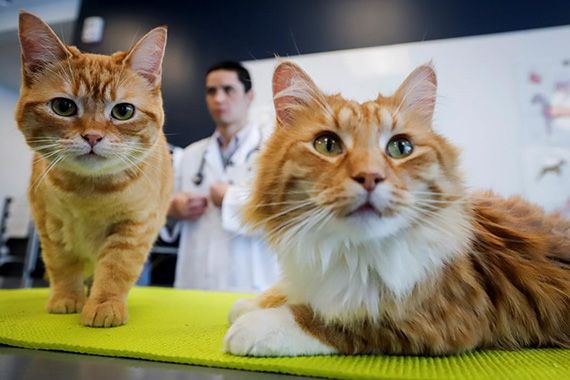“One needs to think about their own life, their own priorities and their own goals before adopting an adorable fur child.” (Photo: The Canadian Press)
When it comes to advising young clients who are considering welcoming a new fur baby into their family, certified financial planner and cat owner Cindy Marques has an overarching philosophy: “take care of yourself first.”
While it’s certainly possible for young Canadians with a good financial mindset to be able to afford a pet, Marques says too often she sees clients with financial challenges willing to adopt or to buy a pet, which could land them even deeper into a financial hole.
“Ultimately, a lot of what I do with my clients relies heavily on cash flow planning,” says Ms. Marques, who is also director of education and financial planning at Open Access Limited.
“Ultimately, you have to be pragmatic and start thinking about whether it’s possible to support adding a dependent to your cash flow.”
That’s something Jordyn Preston — a third-year political science and philosophy student at Carleton University — was well aware of when she set her sights on a dachshund puppy this year.
Having grown up with dogs, she already knew how much a puppy could cost. Still, after examining her conservative spending habits and the health of her savings account, she decided she was financially comfortable enough to welcome Phineas into her student residence.
“I have this kind of classic student budget,” says Ms. Preston. I have never made more than minimum wage, I work part time and I have no benefits, but I know how to save and spend my money as a financially independent person.”
Given her canine background and commitment to giving Phineas the best life possible, Ms. Preston has gone to considerable lengths to research the estimated initial and ongoing costs associated with adopting a puppy, taking into account because a smaller dog would probably cost less.
“They tend to eat less, be cheaper to care for, and they don’t need as much exercise, so I don’t need to spend as much time outside of work hours or school with him,” she emphasizes.
A separate entry in the budget
Marques stresses the importance of estimating costs for a pet’s specific needs in advance, as owners should treat their pets as true dependents, rather than something to add to a existing budget item.
“For example, I don’t include my cat’s food in my grocery budget,” she explains. (This amount) is on a separate line, so that it’s very clear and I remember that this is a financial dependent that I love and want to treat well, and that they have a cost for which I am prepared.”
Being a financially prepared pet owner, Marques adds, also means preparing for the worst — putting extra money aside or purchasing pet insurance for unexpected vet visits. as well as setting a mental limit about what one is willing and able to spend if the situation escalates.
“It’s morbid, but especially when an animal starts to age or gets really sick, you have to think seriously about this threshold,” she warns.
“How far are you willing to go before breaking the bank for a pet that you may love dearly, but for which surgery or treatment may not be possible, from a practical and financial?”
For Ms. Preston, part of her emergency planning also included taking into account the kinds of mischief you might expect from a young dog, namely doing things he shouldn’t do.
“Obviously, they’re teething, so they’ll chew on anything they can get their hands on,” she notes, “which means you have to replace a lot of toys, but also your own shoes, clothes, etc.”
“But you have to remember that puppies will do stupid things,” adds Ms. Preston, “which could result in a surprise trip to the vet.”
To account for this, Ms Preston took out pet insurance for the first year of Phineas’ life, given the risks associated with a puppy. Thereafter, she intends to rely solely on a “50-20-30” budget allocation for her finances: 50% for her needs, 20% for her wants, and 30% for her personal savings and money-related accounts. Phineas.
So far, that’s been enough to cover Phineas’ purchase price of $2,200, about $500 in initial veterinary costs like vaccinations and deworming, and more than $1,000 in general supplies, making a total of about $4800 since May 2023.
“Having a pet as a young adult is definitely possible, but you have to be disciplined enough to make it work with your finances and lifestyle,” adds Preston.
This lifestyle consideration is a sentiment that Marques echoes, saying young Canadians need to consider unique factors, financial and otherwise, when deciding whether or not to buy a pet.
“When you are young, many things are unresolved,” she says. You may want to travel and go on spontaneous outings, or you may have a job that doesn’t allow you to go home to take the dog out for an hour,” she explains.
“One needs to think about their own life, their own priorities and their own goals before adopting an adorable fur child.”
By Pascale Malenfant
2023-09-19 22:05:28
#financially #ready #adopt #pet


